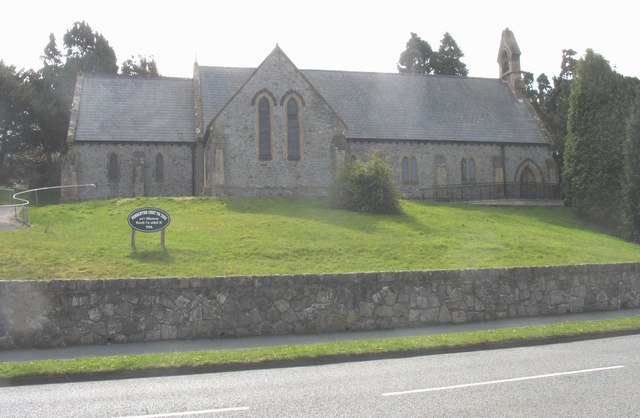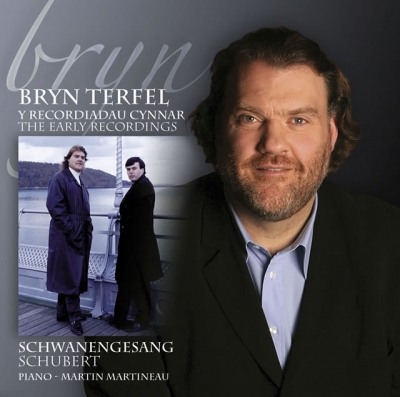|
Vaynol
Vaynol or ''Y Faenol'' ( Welsh ) is a country estate dating from the Tudor period near Y Felinheli in Gwynedd, North Wales (). It has of park, farmland, and gardens, with more than thirty listed buildings, surrounded by a wall which is long. "''Y Faenol''" means "the manor" and is a mutated form of the Welsh word ''maenol''. The buildings on the estate include two Grade I listed halls: Faenol Old Hall, much of which dates from the Williams' period of ownership, and Vaynol Hall, built in 1793 and extended during the 19th century. Once Vaynol Hall was built, Faenol Old Hall became a farmhouse and subsequently deteriorated; in 2003 it appeared on the BBC's '' Restoration'' programme, championed by Robert Hardy. In 2009, the BBC revisited the project, and said that Faenol Hall was now "in private ownership and has been restored". There is also a Grade I listed chapel and a very old barn on the site. The Vaynol estate should not be confused with the neighbouring National Tru ... [...More Info...] [...Related Items...] OR: [Wikipedia] [Google] [Baidu] |
Sir William Williams, 6th Baronet
Sir William Williams, 6th Baronet (– 23 December 1696) of Faenol (Vaynol) was a Welsh politician and landowner elected as MP for Caernarvonshire from 1689 until his death. Career Williams was born in around 1663, the son of Sir Griffith Williams (d.), 4th Baronet, of Faenol (Vaynol), and his wife Penelope, daughter of Thomas, 1st Viscount Bulkeley. Sir Griffith was one of the Williams baronets, and was succeeded by his son Sir Thomas Williams (d.) as 5th Baronet. Sir William succeeded his brother in around 1673. In 1688, he succeeded Robert, 2nd Viscount Bulkeley as Vice-Admiral of North Wales and, in the following year, he was elected as MP for Caernarvonshire. He married his cousin Ellen Bulkeley, the daughter of Robert, 2nd Viscount Bulkeley. Death and legacy Williams died on 23 December 1696 and the Baronetcy became extinct. Ignoring the claims of an impostor, Arthur Owen, who claimed to be a relative, Williams left his Vaynol estate to the descendants of his ... [...More Info...] [...Related Items...] OR: [Wikipedia] [Google] [Baidu] |
Sir Michael Duff, 3rd Baronet
Sir Charles Michael Robert Vivian Duff, 3rd Baronet (3 May 1907 – 3 March 1980) was a British socialite who was Lord Lieutenant first of Caernarvonshire, and then of Gwynedd. Family Duff was the only son of Sir Robert George Vivian Duff, 2nd Baronet, of Vaynol (d.1914), and his wife, Lady Juliet Lowther (1881–1965), only child of the 4th Earl of Lonsdale by his wife, Constance Robinson, Marchioness of Ripon. His maternal grandmother was a sister of the 13th and 14th Earls of Pembroke and Montgomery, and a daughter of the Rt. Hon. Sidney Herbert, 1st Baron Herbert of Lea, the half-Russian younger son of the 10th Earl of Pembroke, and a good friend to Florence Nightingale. He had one sibling, Victoria Maud Veronica Duff (1904–1967, married John Edward Tennant). His stepfather from 1919 until 1926 was Major Keith Trevor. He was a godson of Mary of Teck (queen of King George V). Handsome and good-mannered, he was famed as a host and raconteur. He inherited the Welsh estat ... [...More Info...] [...Related Items...] OR: [Wikipedia] [Google] [Baidu] |
Y Felinheli
Y Felinheli (), formerly known in English as Port Dinorwic, is a village and community beside the Menai Strait ( cy, Y Fenai or ''Afon Menai'') between Bangor and Caernarfon in Gwynedd, northwest Wales. History Toponymy Etymologically, its name comes from the Welsh ''y'' meaning the, ''melin'' meaning mill and ''heli,'' meaning brine/salt-water/sea. An alternative interpretation is from ''Y Felin Heulyn'', "the mill on the River Heulyn", which refers to the river that runs into the village. Origins Y Felinheli has its origins in two hamlets, Tafarngrisiau near St Mary's Church and Aberpwll to the north-east where there was a mill on the Afon Heulyn. The mill was rebuilt closer to the sea in 1633 and gave its name to the settlement. The area was largely agricultural until the area was transformed by slate quarrying in the 19th century. A new dock was built in 1828 when lime was extracted at Brynadda and slate and lime were loaded and culm (coal dust or anthracite slack) w ... [...More Info...] [...Related Items...] OR: [Wikipedia] [Google] [Baidu] |
Thomas Assheton Smith (1776–1858)
Thomas Assheton Smith (the younger) (2 August 1776 – 9 September 1858) was an English landowner and all-round sportsman who was notable for being one of the outstanding amateur cricketers of the early 19th century. He was a Tory politician who sat in the House of Commons from 1821 to 1837. He was also known for his pioneering work on the design of steam yachts in conjunction with the Scottish marine engineer Robert Napier. Early life Smith was born in Queen Anne Street, Cavendish Square, Westminster, London. He was the son of Thomas Assheton Smith I (1752–1828), who made his fortune in the Welsh slate industry and was a noted patron of cricket in the early years of Marylebone Cricket Club (MCC) from the 1787 English cricket season. Smith was educated at Eton between 1783 and 1794, eventually playing for the school's cricket team. He went on to Christ Church, Oxford where he joined the Bullingdon Club and was a prominent member of its team in 1796. Cricket career Sm ... [...More Info...] [...Related Items...] OR: [Wikipedia] [Google] [Baidu] |
Tedworth House
Tedworth House, also known as South Tidworth House, is a 19th-century country house in Tidworth, Wiltshire, England. It is a Grade II* listed building and is used by the charity Help for Heroes. The house and its grounds were in Hampshire until 1991, when the county boundary was redrawn. History The first house on the site, on the southwest outskirts of South Tidworth, was well established when it was purchased by Thomas Smith in 1650. The estate passed to his grandson, John Smith (1656–1723), who became Chancellor of the Exchequer, and then to his son Thomas who died unmarried soon after in 1728. It was inherited (together with the Vaynol Park estate in Wales) by Thomas Assheton (d.1774) of Ashley Hall, Cheshire, nephew of Captain William Smith, another of John Smith's sons. Assheton added Smith to his name, and his son Thomas Assheton Smith (1752–1828) was MP for Caernarvonshire and later for Andover. After his death his son, also Thomas (1776–1858), a keen foxhunte ... [...More Info...] [...Related Items...] OR: [Wikipedia] [Google] [Baidu] |
Slate Industry In Wales
The existence of a slate industry in Wales is attested since the Roman period, when slate was used to roof the fort at Segontium, now Caernarfon. The slate industry grew slowly until the early 18th century, then expanded rapidly until the late 19th century, at which time the most important slate producing areas were in northwest Wales, including the Penrhyn Quarry near Bethesda, the Dinorwic Quarry near Llanberis, the Nantlle Valley quarries, and Blaenau Ffestiniog, where the slate was mined rather than quarried. Penrhyn and Dinorwig were the two largest slate quarries in the world, and the Oakeley mine at Blaenau Ffestiniog was the largest slate mine in the world. Slate is mainly used for roofing, but is also produced as thicker slab for a variety of uses including flooring, worktops and headstones.Lindsay p. 133 Up to the end of the 18th century, slate was extracted on a small scale by groups of quarrymen who paid a royalty to the landlord, carted slate to the ports, an ... [...More Info...] [...Related Items...] OR: [Wikipedia] [Google] [Baidu] |
Bryn Terfel
Sir Bryn Terfel Jones, (; born 9 November 1965) (known professionally as Bryn Terfel) is a Welsh bass-baritone opera and concert singer. Terfel was initially associated with the roles of Mozart, particularly '' Figaro'', '' Leporello'' and ''Don Giovanni'', but has subsequently shifted his attention to heavier roles, especially those by Puccini and Wagner. Biography Bryn Terfel Jones was born in Pant Glas, Caernarfonshire, Wales, the son of a farmer. His first language is Welsh. To avoid confusion with another Welsh baritone, Delme Bryn-Jones, he chose Bryn Terfel as his professional name. He had an interest in and talent for music from a very young age. A family friend taught him how to sing, starting with traditional Welsh songs. After winning numerous competitions for his singing, he moved to London in 1984 and entered the Guildhall School of Music and Drama where he studied under Rudolf Piernay. In 1988 he entered and won the Morriston Orpheus Choir Supporters' Associat ... [...More Info...] [...Related Items...] OR: [Wikipedia] [Google] [Baidu] |
_NLW3361483.jpg)


%2C_Blaenau_Ffestiniog_(14117319357).jpg)
